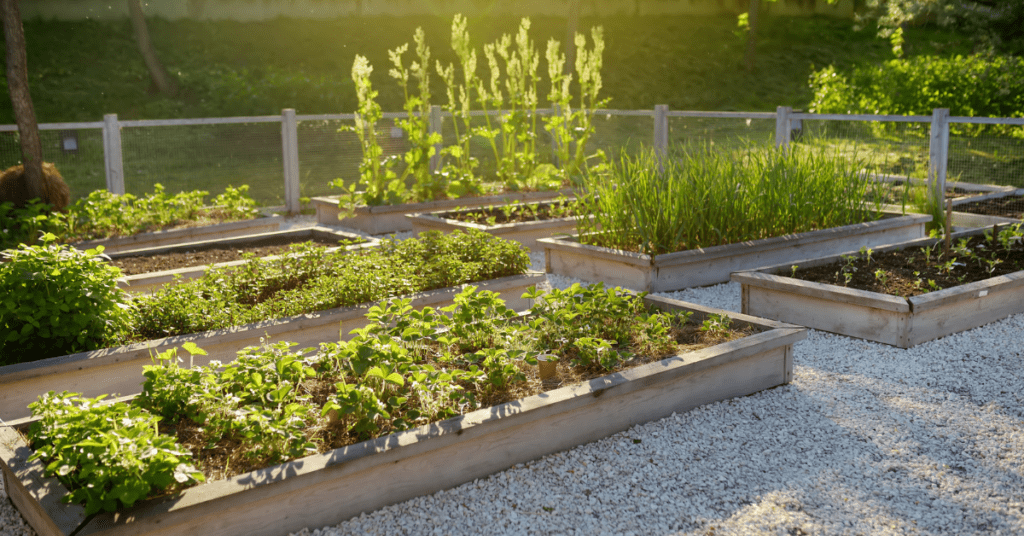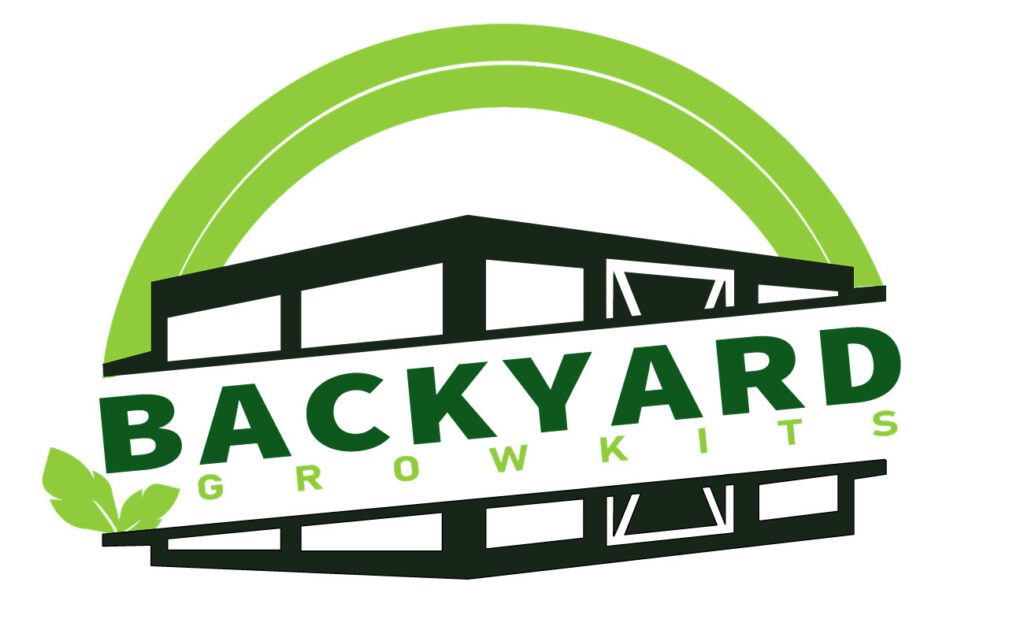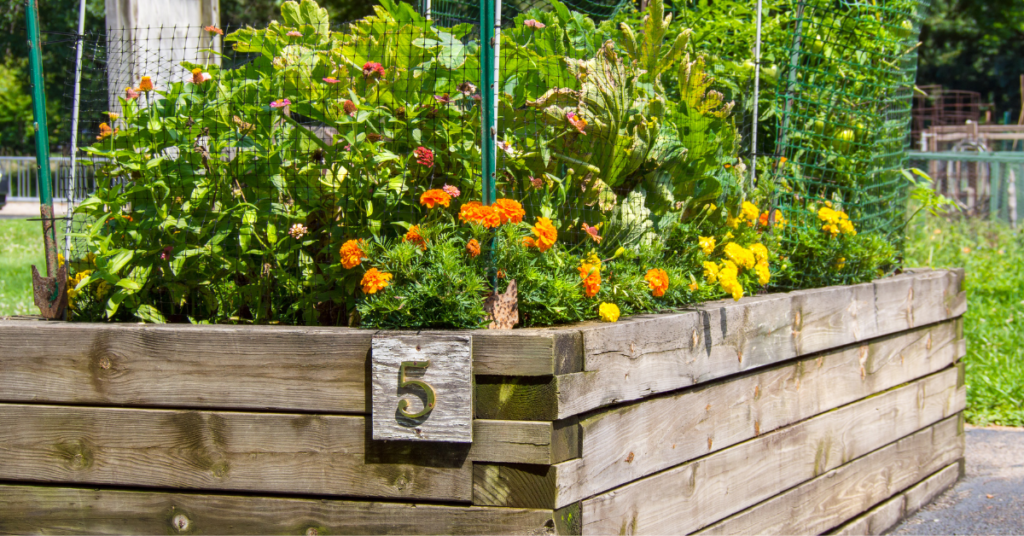Raised garden beds are an increasingly popular way of growing organic vegetables, herbs, flowers, and other plants. They are easy to install, require less maintenance than traditional gardens, and produce higher yields.
This blog article will explore how to fill a raised garden bed for a healthy harvest, complete with organic gardening tips for success.
Introduction to Raised Garden Beds
Raised garden beds are a type of gardening that utilizes above-ground frames to contain soil and plants. As a result, the soil is built up above the native soil level, which allows for better drainage, improved soil structure, and more efficient use of space.
There are a variety of materials that can be used to build raised beds, including wood, plastic, and metal. Each material offers its benefits and drawbacks, so it’s important to research which suits you.
When building raised beds, it’s important to consider the size, shape, and placement. Raised beds can be any size, so choosing a size that fits your space and gardening needs is essential. It’s also important to consider the shape of the bed. Raised beds can be rectangular, triangular, or even circular.
Finally, it’s essential to consider the placement of the bed. Raised beds should be placed in an area with plenty of sunlight and adequate drainage. Once you’ve determined the size, shape, and placement, you can fill your raised garden bed.
Preparing the Soil for a Raised Garden Bed

Preparing the soil for a raised garden bed is an important step. A good soil mix is essential for proper drainage, nutrient cycling, and promoting healthy plants.
Before filling your raised bed, you should test the soil to determine the nutrient levels and pH. Once you’ve tested the soil, you can decide which amendments you need to add to improve the soil structure.
Organic matter is an essential part of a healthy soil mix. Compost is the perfect addition to a raised bed, as it helps to improve soil structure, increase water retention, and provide essential nutrients. Manure and other organic amendments can also be added to the soil mix to improve the soil fertility.
Once you’ve added the necessary amendments, you’re ready to fill your raised bed. Make sure to fill the bed evenly and tamp down the soil to ensure good contact with the sides of the bed.
What to Plant in a Raised Garden Bed

Once your raised bed is filled, you can start planting. When deciding what to grow, it’s essential to consider each plant’s light, temperature, moisture, and soil requirements. Different plants have different needs, so it’s vital to research each plant before planting.
When planting in a raised bed, it’s essential to consider the size of the bed. Sticking with smaller plants such as herbs or lettuce may be best if the bed is small. However, if the bed is more significant, you can plant larger vegetables such as tomatoes or squash.
It’s also important to consider the spacing of the plants. Crowding plants can lead to disease and pest problems, so it’s essential to ensure adequate space for each plant.
Finally, it’s essential to consider the companion planting of different crops. Some plants grow better when planted near certain other plants, so research companion planting to get the most out of your raised bed.
Using Organic Fertilizers for a Raised Garden Bed

Organic fertilizers are a great way to promote healthy plants in a raised bed. Organic fertilizers are made from natural ingredients such as compost, manure, and other organic materials. They provide a slow release of nutrients, which helps to promote healthy growth and a healthy environment.
When using organic fertilizers, it’s essential to consider the type of fertilizer you’re using. In addition, different plants require different nutrients, so choosing a fertilizer tailored to your plant’s needs is vital.
It’s also important to consider the application rate of the fertilizer. Too much fertilizer can harm the plants, so following the package’s directions is essential.
Watering a Raised Garden Bed
Watering is an essential part of maintaining a healthy raised bed. How often you water will depend on the type of plants you’re growing and the weather conditions.
In general, it’s best to water the plants deeply and infrequently. This encourages the plants to develop deep root systems, which helps them access moisture even during drought.
When watering a raised bed, it’s essential to avoid runoff. Runoff can carry away vital nutrients and can lead to erosion. Instead, it’s best to water slowly and evenly so that it has time to soak into the soil.
Benefits of Planting in a Raised Garden Bed

Raised garden beds offer several benefits over traditional gardens. They require less space and less maintenance and can produce higher yields.
The soil in a raised bed drains better and warms faster, which can lead to earlier harvests. The soil in a raised bed also tends to be higher in organic matter, which helps to promote healthy plants.
Raised beds also provide an ideal environment for companion planting. Different plants can be planted nearby, which helps to promote healthy growth.
Finally, raised beds are an excellent choice for gardeners with space or mobility issues. Raised beds can be built on any flat surface, which makes them ideal for small spaces.
Common Pest Control Methods for a Raised Garden Bed
Pests can be a significant problem in a raised bed. The good news is there are several effective methods for controlling pests.
One of the most effective methods is to use companion planting. Certain plants, such as marigolds, have been known to repel certain pests.
Another effective method is to use row covers. Row covers are sheets of lightweight fabric that can be placed over the raised bed to protect the plants from pests. They can also protect plants from extreme temperatures or weather conditions.
Finally, it’s essential to keep the raised bed free of debris. This can help to prevent pests from taking up residence in the bed. Monitoring the bed regularly for signs of pest infestations is also essential.
Tips for a Healthy Harvest
Now that you know how to fill a raised garden bed, here are some tips for a healthy harvest:
Water regularly: It’s essential to water your plants regularly to ensure they have enough moisture.
Mulch: Mulching helps to conserve moisture and control weeds.
Fertilize: Fertilizing your plants helps to ensure they have enough nutrients for healthy growth.
Prune: Pruning helps to promote healthy growth and keep plants from becoming overgrown.
Monitor: Monitor your plants regularly for signs of disease or pests.
By following these tips, you’ll be well on your way to a healthy harvest.
Parting Remarks on How to Fill a Raised Garden Bed
Raised garden beds are a great way to grow organic vegetables and herbs. You’ll be on your way to a successful harvest following these steps.
First, prepare the soil by adding organic matter and testing the pH and nutrient levels. Next, determine what to plant and consider companion planting.
Use organic fertilizers to promote healthy growth and water deeply and infrequently.
Finally, use mulch, prune, and monitor your plants regularly for signs of pests or disease. With these tips, you can ensure a healthy harvest from your raised garden bed.

